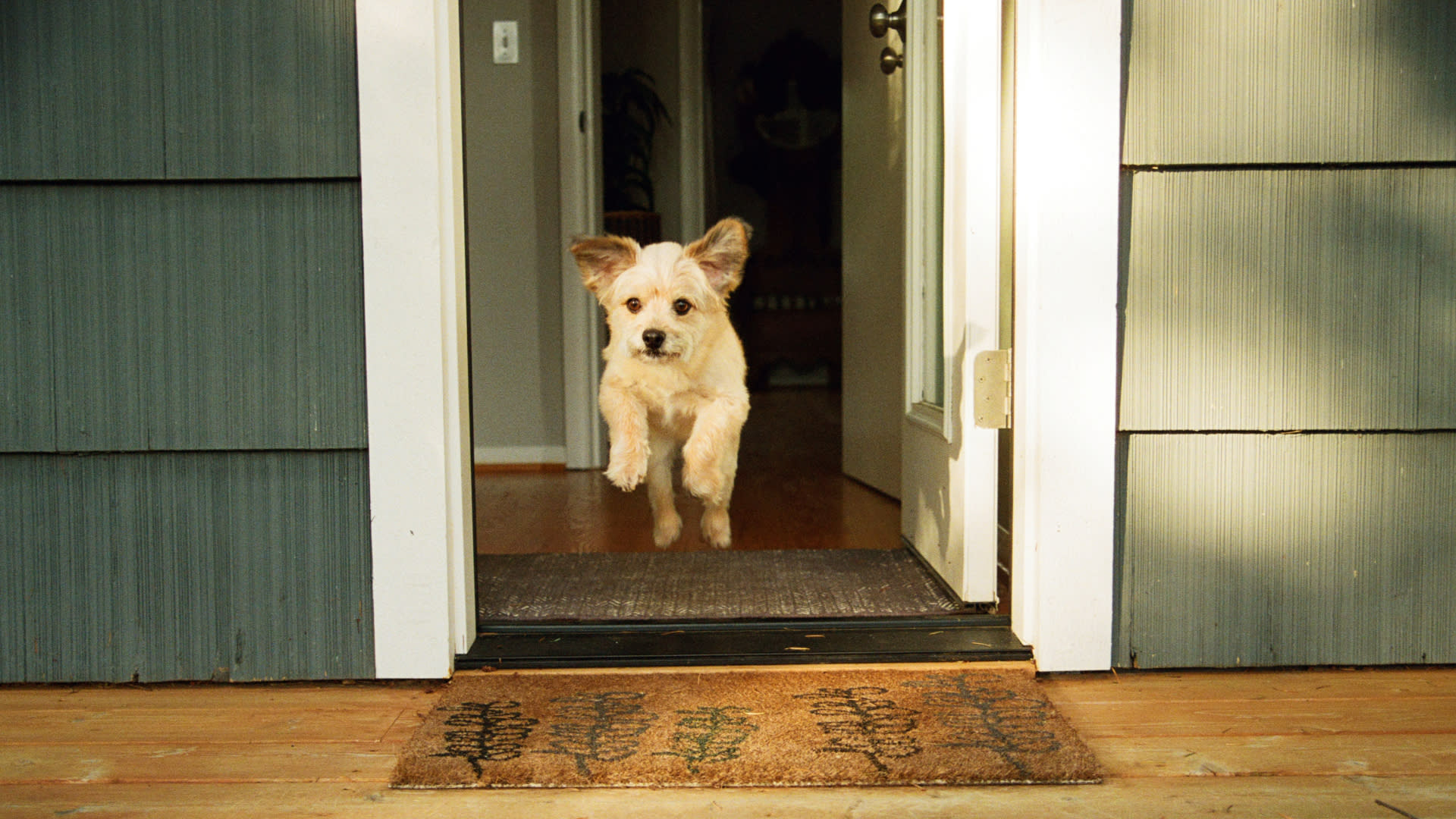More Open Doors Mean More Risk
Summer means backyard gatherings, guests arriving, and kids running in and out — and that means more open doors. For an untrained dog, that’s an invitation to bolt.
Door dashing is one of the most dangerous behavior issues. One moment of impulse can lead to a lost or injured dog. Luckily, with structured training, you can teach your dog to pause at doorways, not dash through them.
Why Dogs Door Dash
Door dashing isn’t defiance — it’s usually a mix of excitement, lack of impulse control, and inconsistent boundaries. If your dog has ever been allowed to run through a door without permission, even once, that becomes the default behavior.
Training door manners is about resetting that expectation.
Step 1: Create a Pattern of Calm at the Door
Every time you approach the door with your dog, make them pause. Ask for a “sit” or “down” before opening the door — even if you’re not planning to go out.
Repetition builds clarity. Soon, the door will cue calmness, not chaos.
Step 2: Introduce the “Wait” or “Stay” Command
Use a leash at first. Give your dog a clear command (“wait”) and open the door just an inch. If they move forward, close it. Repeat until they stay calmly as the door opens wider.
Only release them with a specific cue — like “okay” — once you’re ready.
Practice this with all household exits: front door, back door, garage, even the car door.
Step 3: Practice Controlled Exits During Calm Moments
Don’t wait for guests to arrive or kids to get excited. Instead, practice when the house is quiet:
- Leash your dog
- Approach the door
- Ask for a sit
- Open it slowly
- Reward calm behavior
- Step outside first — your dog follows only after the release word
This teaches that going through the door is a privilege that comes with calm behavior.
Step 4: Add Distractions Gradually
Once your dog holds position with an open door, layer in distractions:
- Ring the doorbell
- Have someone walk past outside
- Practice when delivery drivers pull up
Reward for staying put. If your dog breaks, calmly reset and try again.
Step 5: Reinforce With Structure — Always
If your dog gets too excited, go back to leash practice. Don’t allow “just this once” slip-ups. Structure must be consistent to prevent regression.
What If Your Dog Has Already Bolted Before?
If door dashing is already a habit:
- Start from scratch with leash drills
- Block access with baby gates while training
- Avoid giving your dog free access to doors unattended
- Make every door interaction a training opportunity
You’re not just managing behavior — you’re rewiring patterns.
Final Thoughts: Calm Exits = Safer Summers
Training your dog to pause at doors gives you peace of mind — and gives your dog freedom in a safe, structured way. Whether you’re heading to the yard, the car, or welcoming guests, your dog should always wait for your lead.
Impulse control is teachable. With calm repetition, your dog will learn that waiting is the rule — not the exception.


